Kinds of Reliability Test (可靠性测试的种类)
-
Precon Test(Preconditioning Test) 预处理测试
-
Reliability Test 可靠性测试
-
T/C Test(Temperature Cycling Test)温度周期测试
-
T/S Test(Thermal Shock Test) 热冲击测试(迅速冷热交替)
-
HTST(High Temperature Storage Test) 高温仓测试(可以置于空气或者氮气柜中)
-
T&H Test(Temperature & Humidity Test) 温度及湿度测试(潮湿环境,腐蚀,电解质置换Au. A.基板铜层可能开路short,焊盘pad Al腐蚀;b.第一bond键合点断开)
-
PCT(Pressure Cooker Test) 高压锅测试(饱和蒸汽,100%RH,主要用于QFP产品)
-
HAST(Highly Accelerated Stress Test) 高加速应力测试
(不饱和蒸汽,80%RH,主要用于BGA产品)
Psi 磅/平方英寸 英制压力1Psi=6.89x10^3pa1Pa=10^5bar=145x10^6psi-
Preconditioning Test(预处理测试)
Purpose of Precon Test(预处理测试的目的)
To know the workability of Semiconductor devices after soldering.了解半导体器件焊接后的可制造性。
It simulates delivery from assembly house to customers plant and soldering on PCB.模拟从封装厂到客户处的运输及在线路板上的焊接
Procedure of Precon Test 预处理的程序
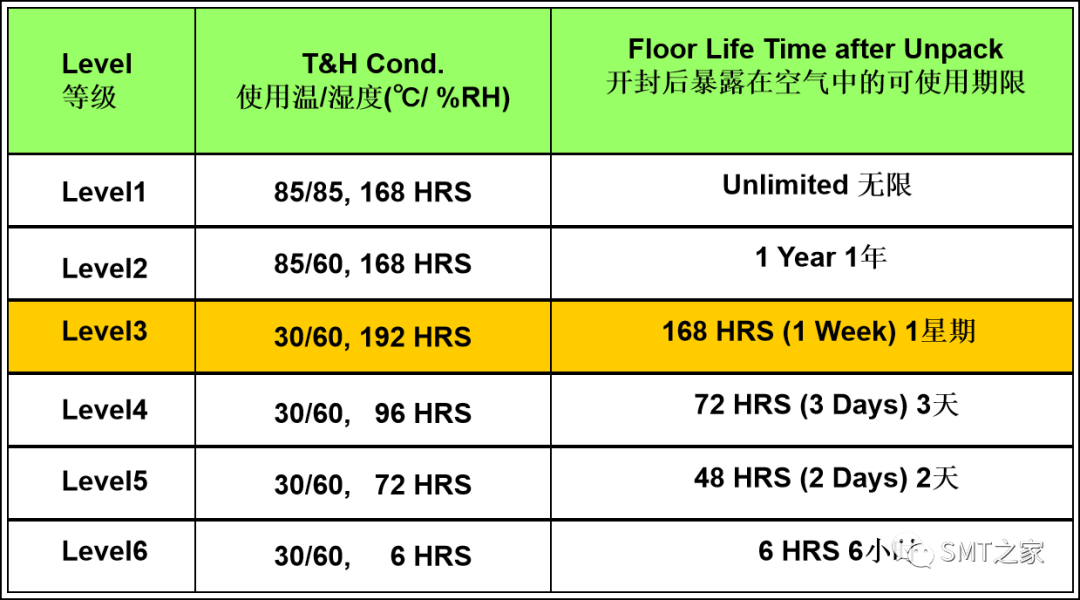
J-STD-0207,MSL Level可以自己做,比如MSL level 3 pass, Level 2 fail,那么此产品就做MSL Level 3合适
Defects after Precon Test 预处理实验后的故障缺陷
-
Package Crack 封装面的开裂
-
Delamination 分层
-
Electrical Open/Short 开路/短路
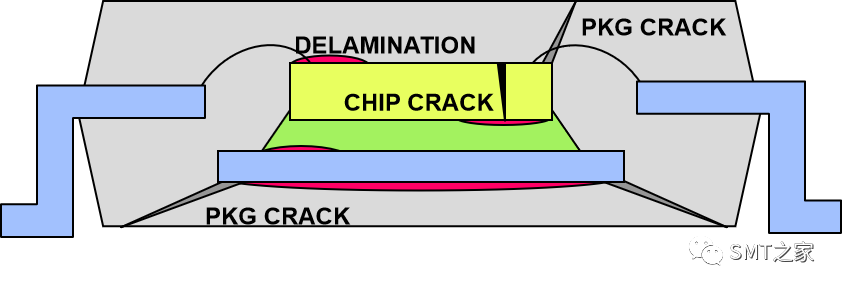
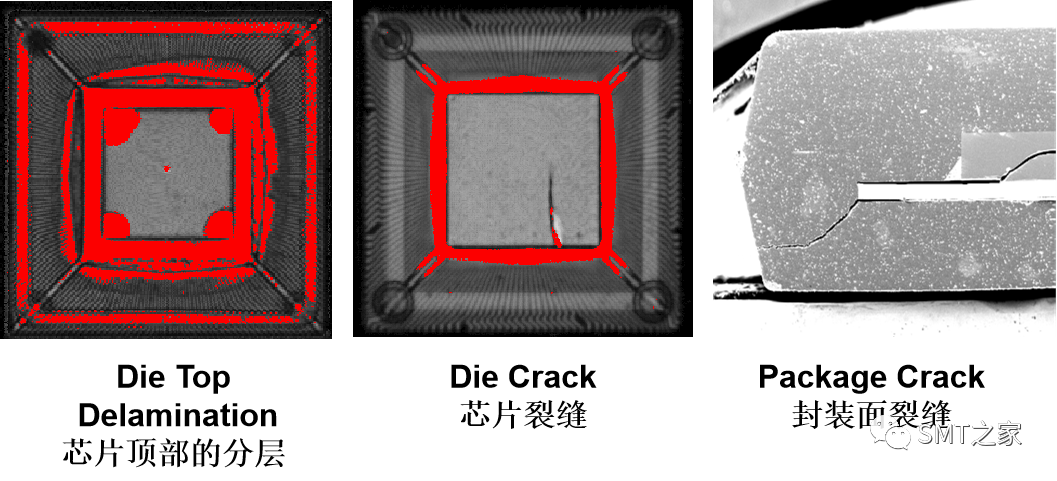
II. Reliability Test 可靠性测试
Purpose of Rel. Test 可靠性测试的目的
To know the workability of Semiconductor devices after Board Mounting in Real Situations which can be induced by actual users
了解半导体器件贴装后在实际情况下的可靠性,可由实际用户进行归纳

Procedure of Reliability Test 可靠性试验流程
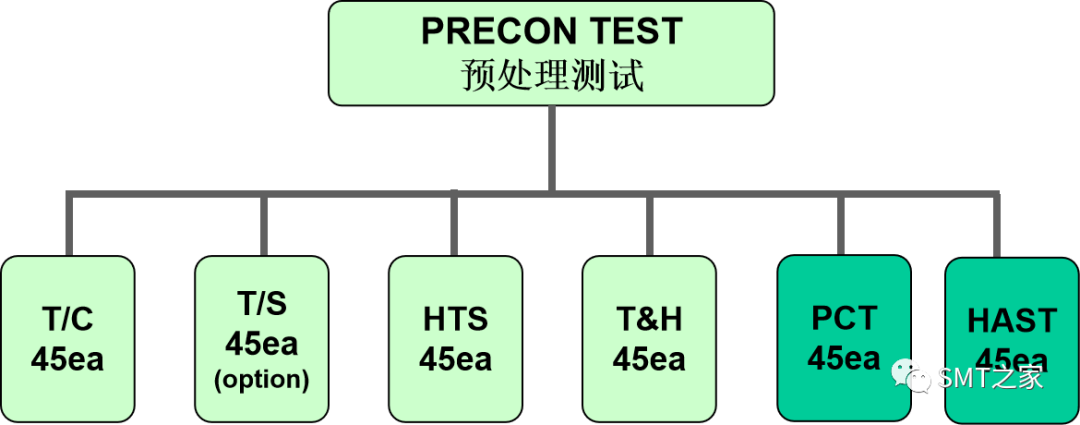
Temperature Cycling test 温度循环测试
Purpose of T/C 温循测试的目的
To know the durability of Semiconductor package resisting expansion and shrinkage by high and low temperature.了解半导体封装承受高、低温热胀冷缩的耐久性。
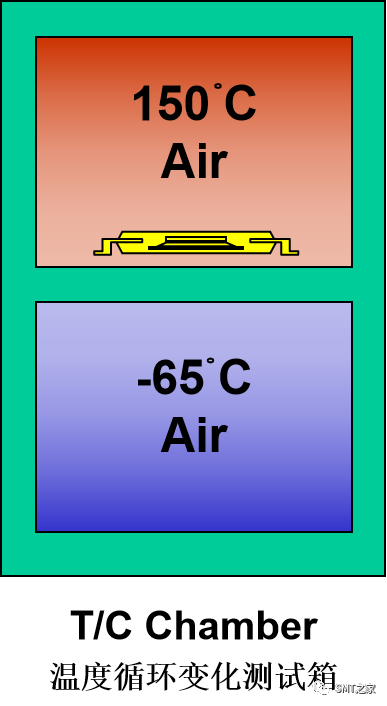
-
Test Conditions 测试条件
-
Temp : +150 / -65 deg.C 温度: +150/-65摄氏度
-
Time : 15 min/ zone 时间: 15分/区间
-
Read-out Point : 1000 cycle 读取点:1000次循环
Measurement 测量 Open/Short Test 开短路测试
Effects of T/C Test 温循T/C测试的影响
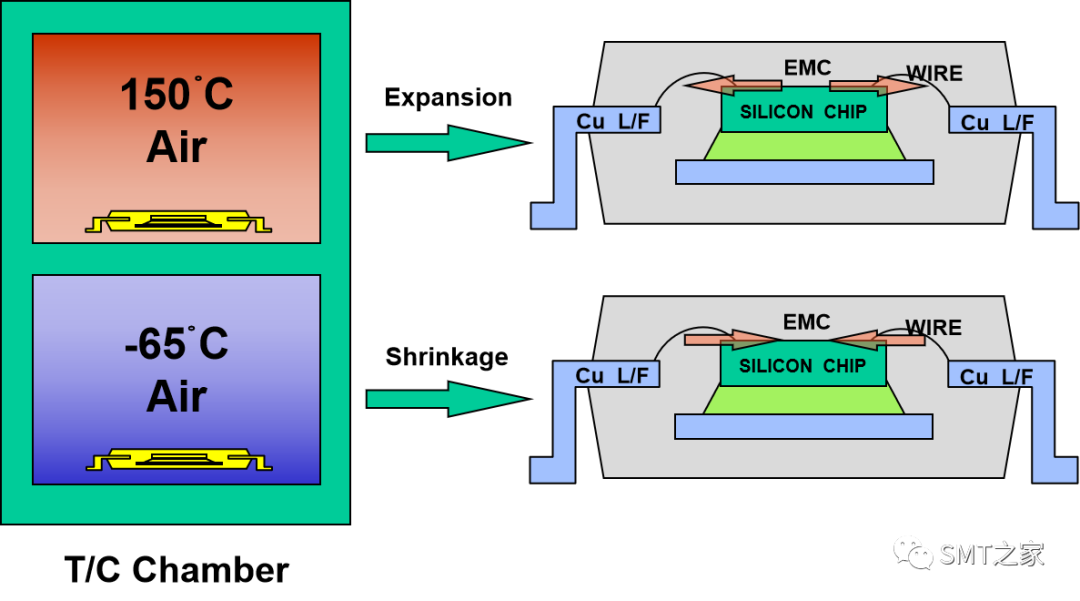
Failures after T/C Test 温度循环测试后的失效故障
Open due to Bond Lift or Ball Neck Broken by the chip surface Delamination 由于打线键合的剥离或键球颈表面被破坏导致开路
Short due to Cracked Die 芯片开裂导致短路

Open Failure after T/C Test 温度循环测试后的开路失效故障
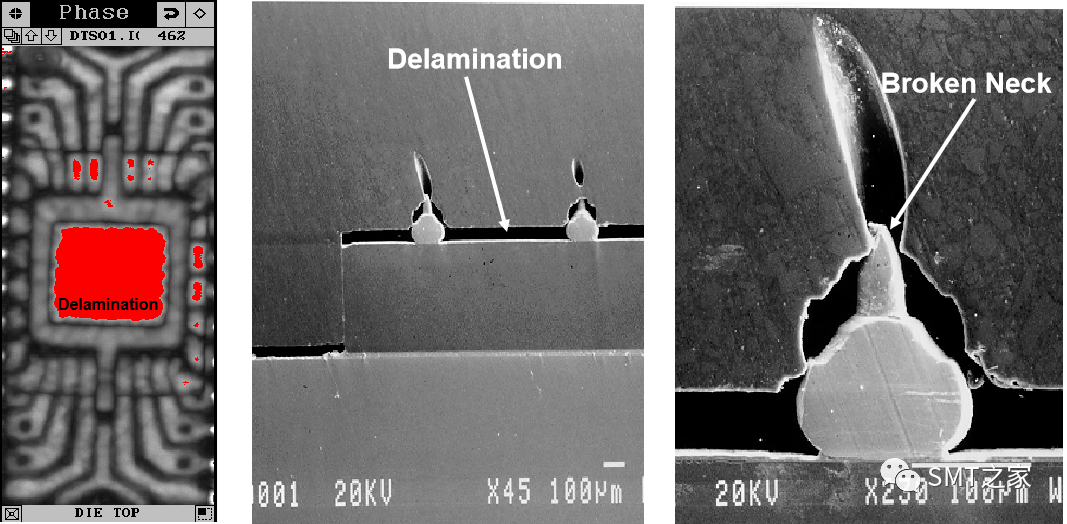 Die Top Delamination & Ball Neck Broken 芯片顶部脱层和球颈断裂
Die Top Delamination & Ball Neck Broken 芯片顶部脱层和球颈断裂
2. Thermal Shock Test 热冲击测试
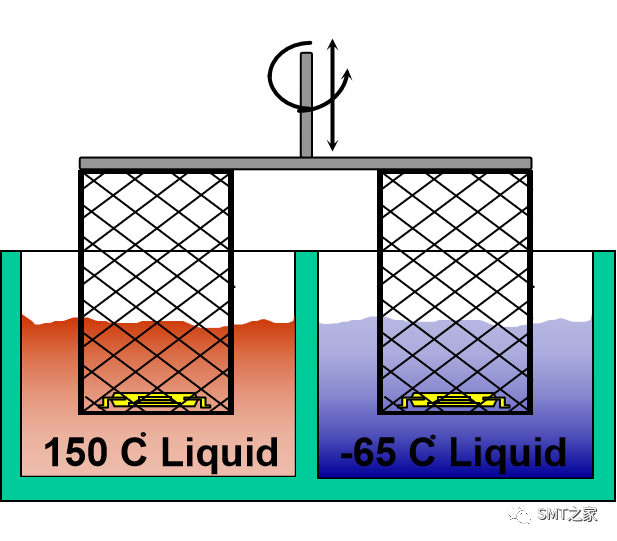
-
Test Conditions 测试条件
-
Temp : +150 / -65 deg.C 温度: +150/-65摄氏度
-
Time : 5 min/ zone 时间: 15分/区间?
-
Read-out Point : 1000 cycle 读取点:1000次循环
Measurement 测量 Open/Short Test 开短路测试
3. High Temp Storage Test 高温仓贮存试验
Purpose of HTST 高温仓测试的目的
To know the durability of Semiconductor package when exposed under the high temperature for long time.了解半导体封装长时间暴露在高温下的耐久性。

-
Test Conditions 测试条件
-
Temp : 150 deg.C 温度:150摄氏度
-
Read-out Point : 1000 HRS 读取点:1000小时
Measurement 测量 Open/Short Test 开短路测试
Effect of HTST 影响高温仓测试的因素
This test accelerates a diffusion among Semiconductor materials by heat then makes Open failure. 此次测试加速了半导体材料之间的热扩散导致的开路失效。
Crack can be occurred by heat. 受热后产生裂纹。
Open Failure after HTST 高温仓测试后的开路
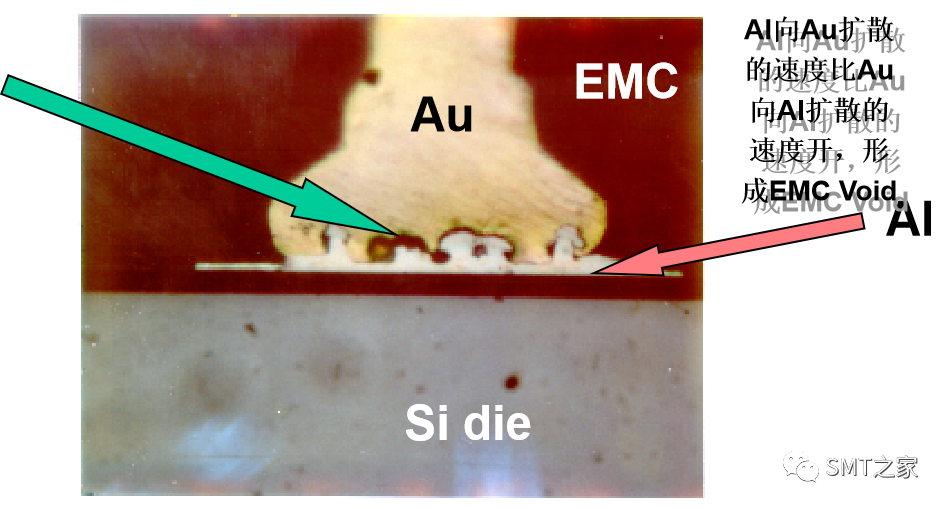
4. Temperature & Humidity(T&H) Test 温度及湿度测试
Purpose of T&H Test 温度及湿度测试的目的
To know the durability of Semiconductor PKG under the high temp and humidity condition 了解半导体封装在高温高湿环境下的耐久性

-
Test Conditions 测试条件
-
Temp : 85 deg.C 温度:85 摄氏度
-
Humidity : 85 RH% 湿度: 85 %
-
Read-out Point : 1000 HRS 读取点:1000小时
Measurement 测量 Open/Short Test 开短路测试
Effect of T&H Test 影响温度及湿度测试的因素
Al bonding pad corrosion can be occur by the moisture which was absorbed through EMC than makes Open failure
铝键合垫腐蚀是通过EMC吸收的水分引起的,而不是直接失效的。
Short or Leakage can be occur by ion which moves through moisture inside package
短路或泄漏可能是由于离子穿过包装内的湿气而引起的。
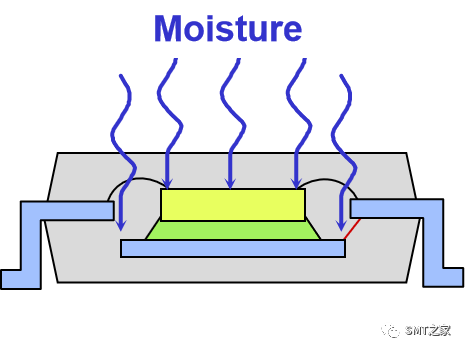
Failure after T&H Test 温度及湿度测试后的失效
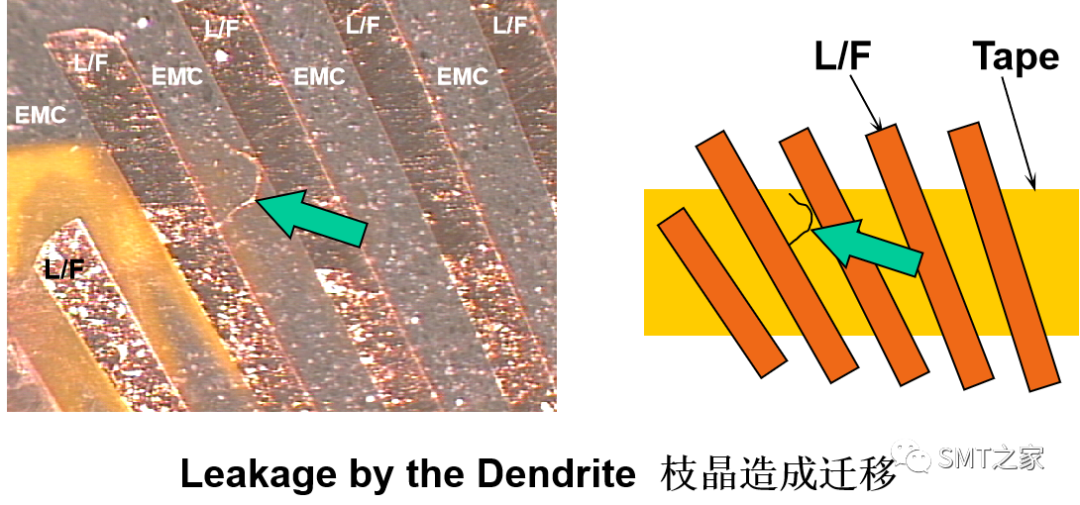
5. Pressure Cooker Test(PCT) 压力锅试验(PCT)
Purpose of PCT 高压锅测试的目的
To know the existence of gap between EMC & L/F 了解EMC和L/F之间存在的差距

-
Test Conditions 测试条件
-
Temp : 121 deg.C 温度:121摄氏度
-
Humidity : 100 RH% 湿度:100%
-
Pressure : 2 ATM 压力:2ATM
-
Read-out Point : 168HRS 读取点:168小时
Measurement 测量 Open/Short Test 开短路测试
Effect of Pressure Cooker Test 压力锅试验的效果
Aluminum bonding pad corrosion failure can be occur by the moisture which was penetrated through a gap between EMC and Lead Frame.
通过EMC和引线框架之间的缝隙渗透的水分会导致铝焊盘腐蚀失效。
This corrosion can makes open failure.
这种腐蚀会导致开路失效故障。
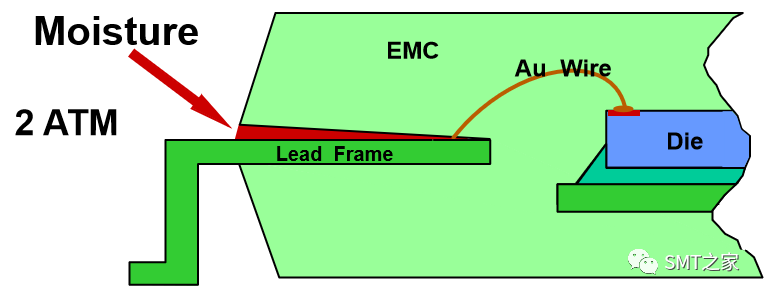
Pad Corrosion by PCT 高压锅测试导致的焊盘腐蚀

Highly Accelerated Stress Test(HAST) 高加速应力测试(HAST)
To know the existence of gap between EMC & Substrate
了解EMC与基板之间间隙的存在关系

-
Test Conditions 测试条件
-
Temp : 130 deg.C 温度:130摄氏度
-
Humidity : 100 RH% 湿度: 100%
-
Pressure : 33.3Psi 压力:33.3Psi
-
Read-out Point : 96HRS 读取点:96小时
Measurement 测量 Open/Short Test 开短路测试


 0
0









